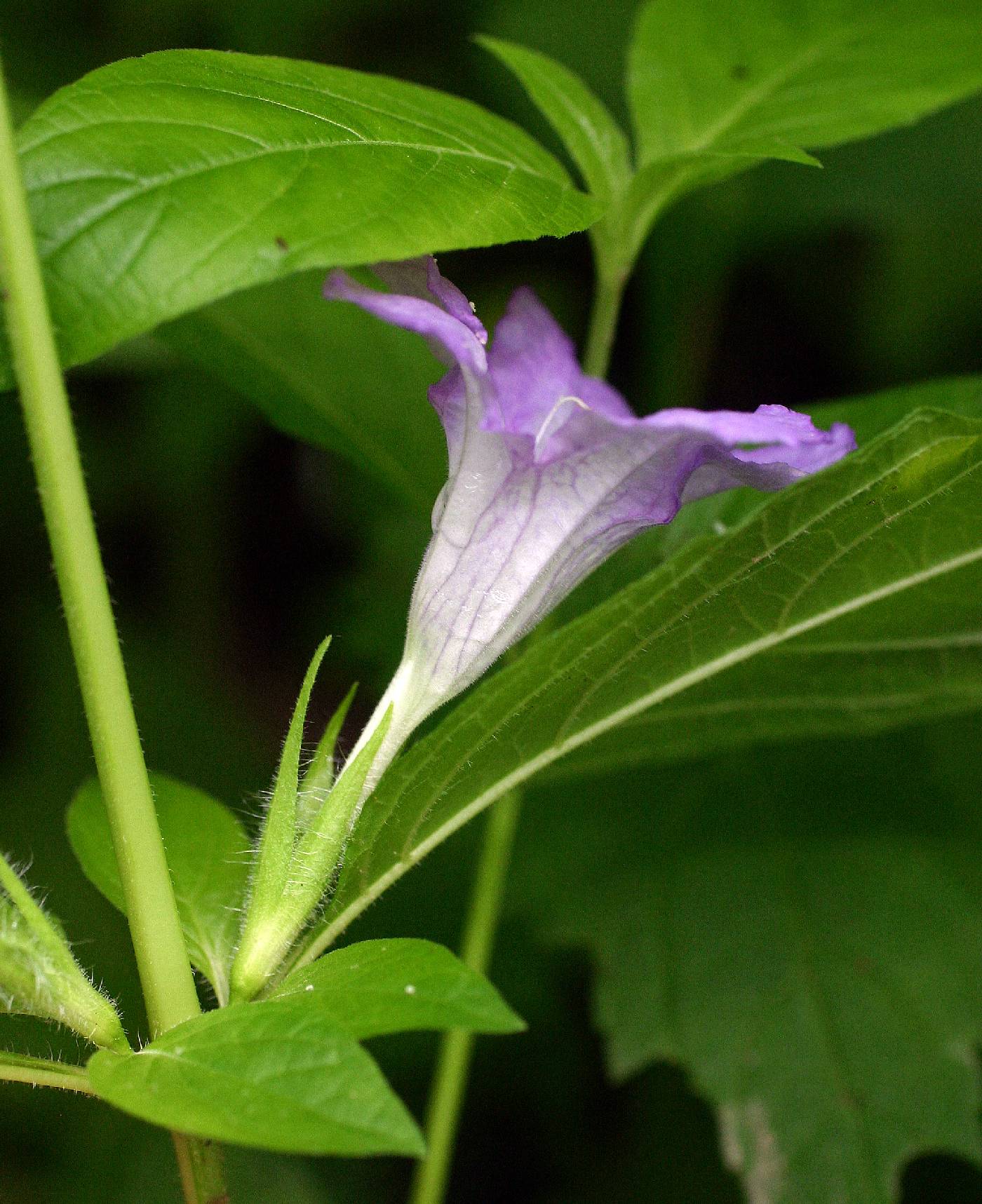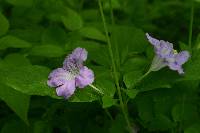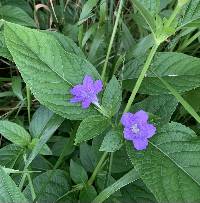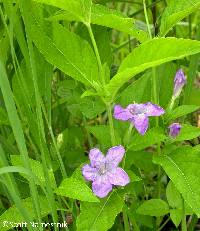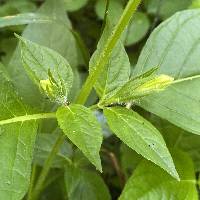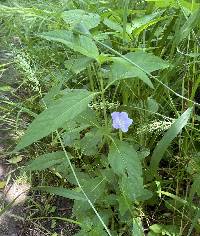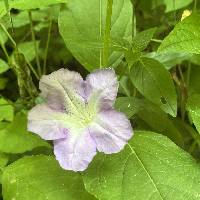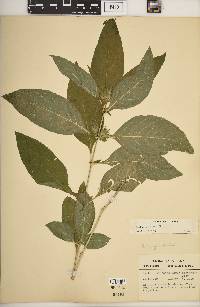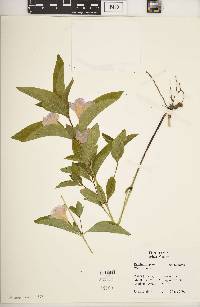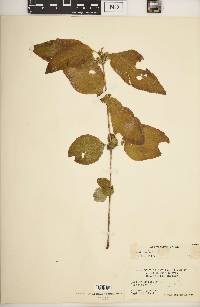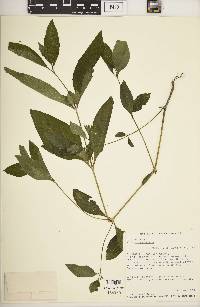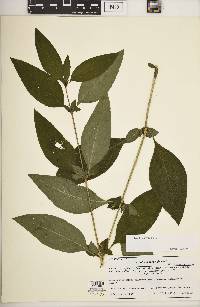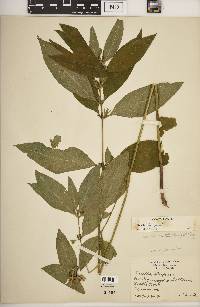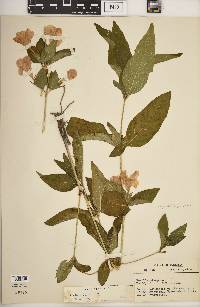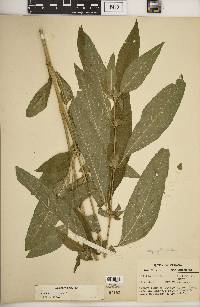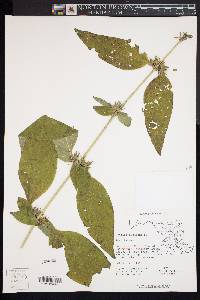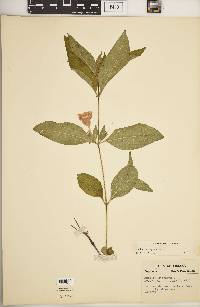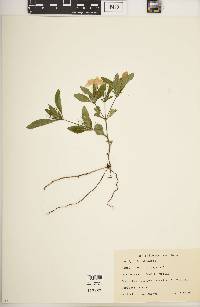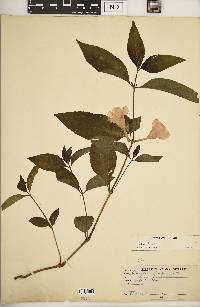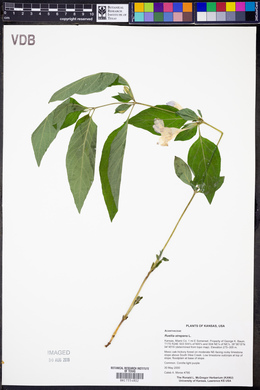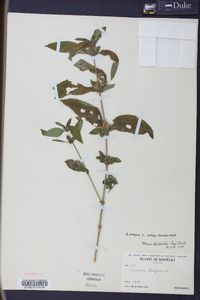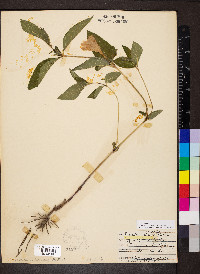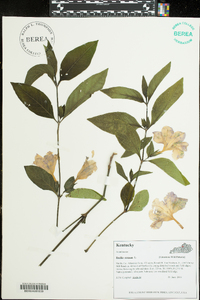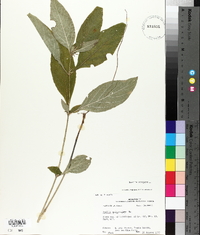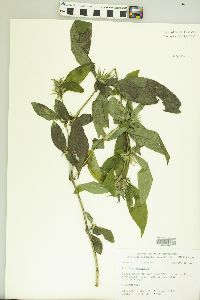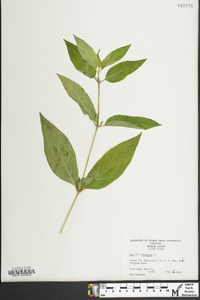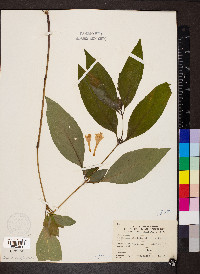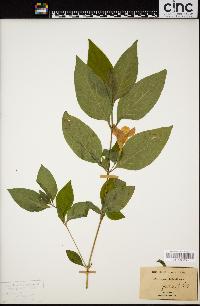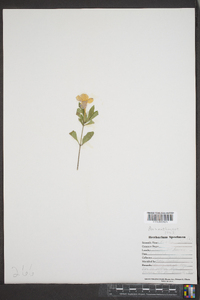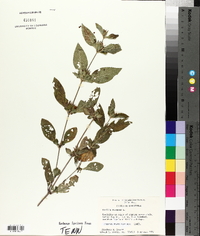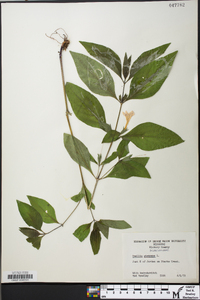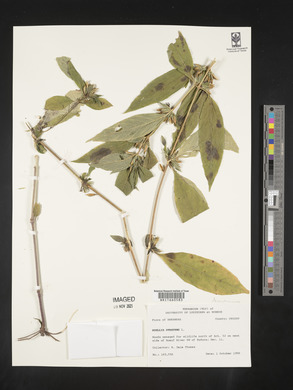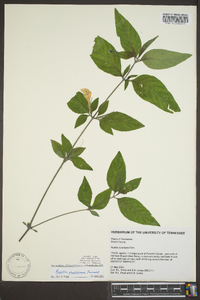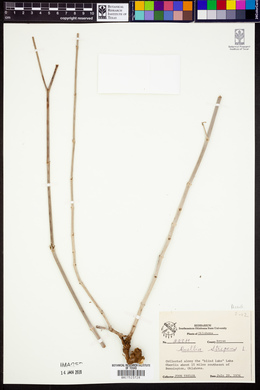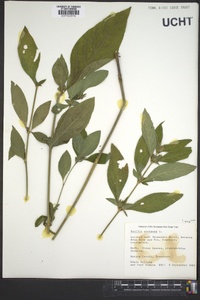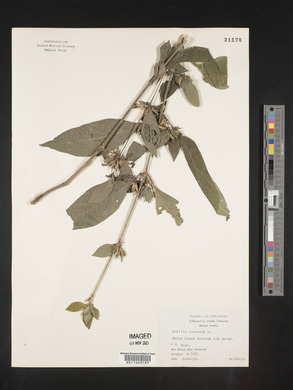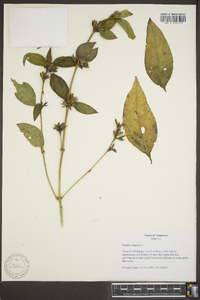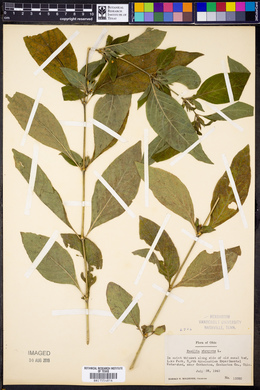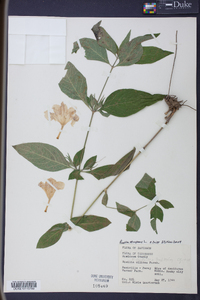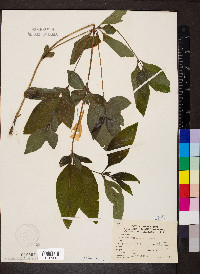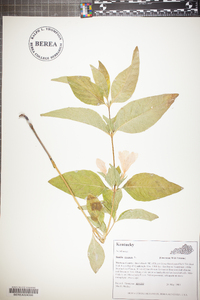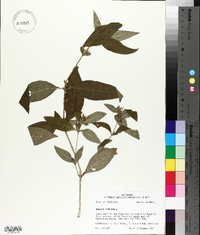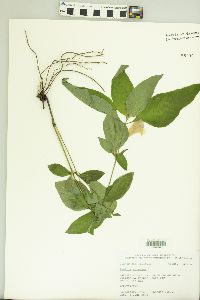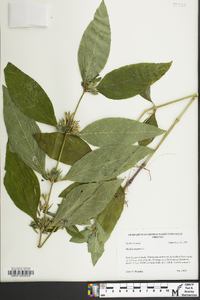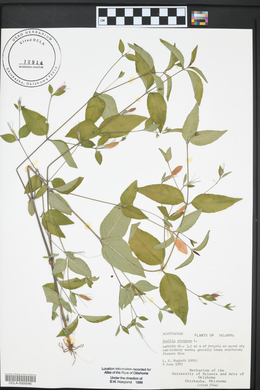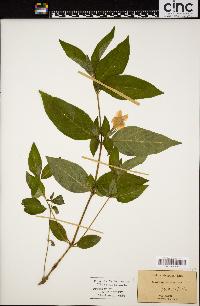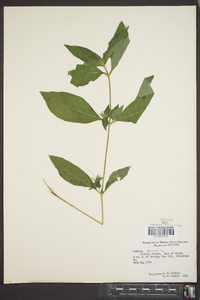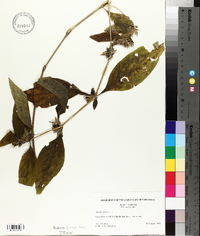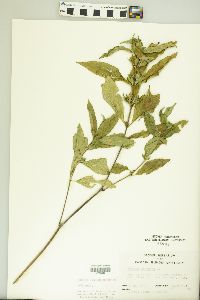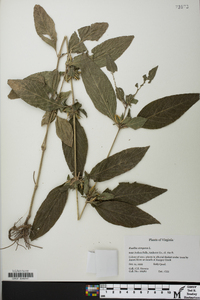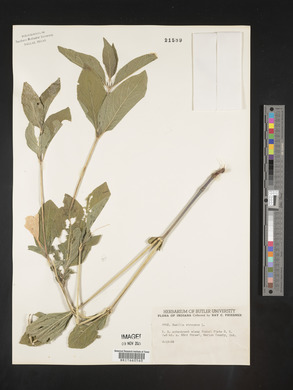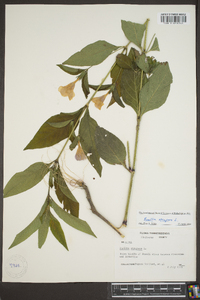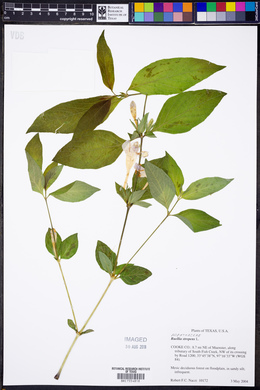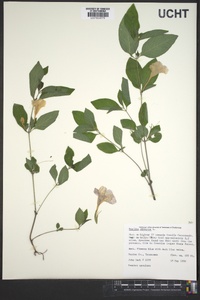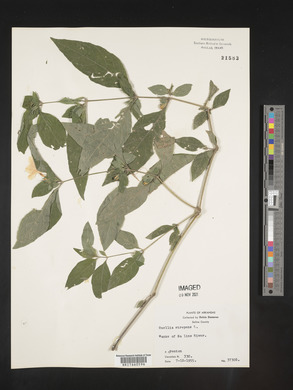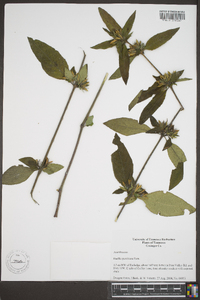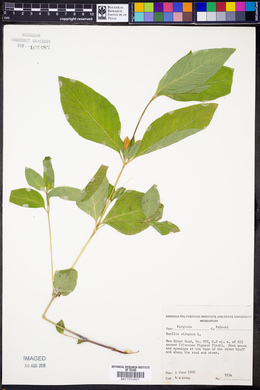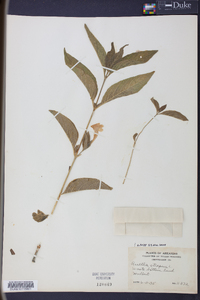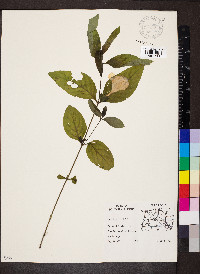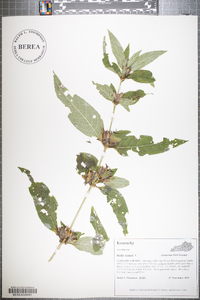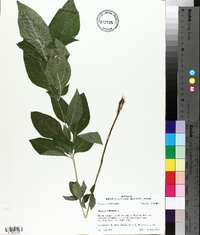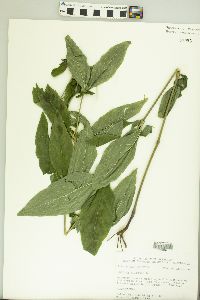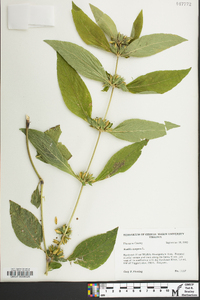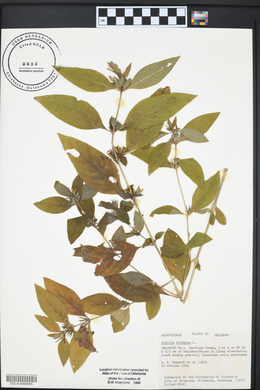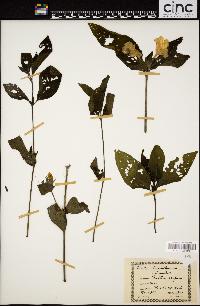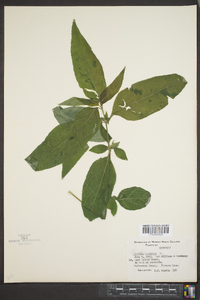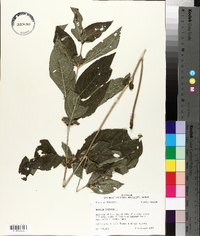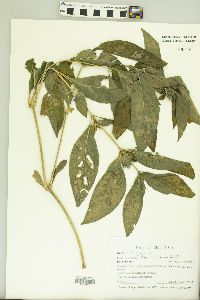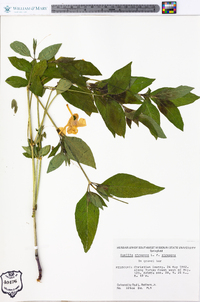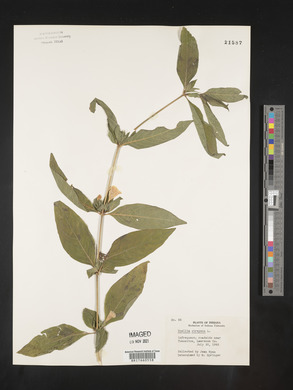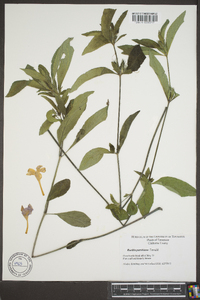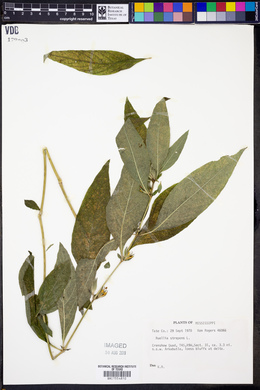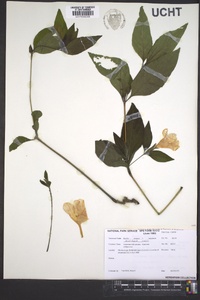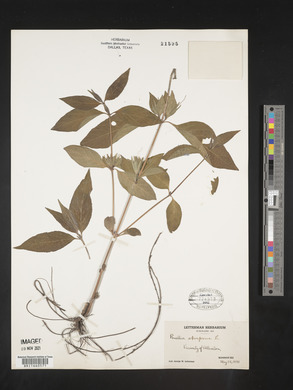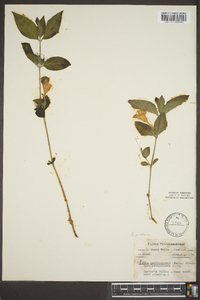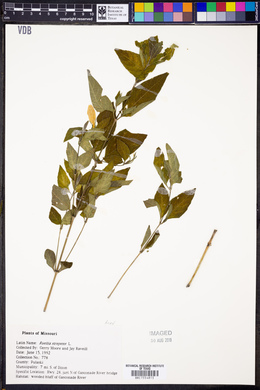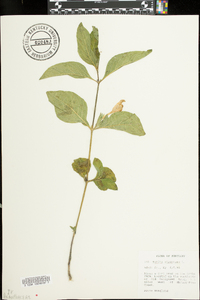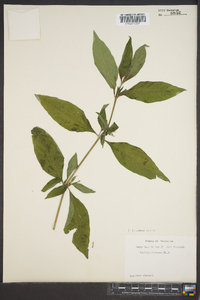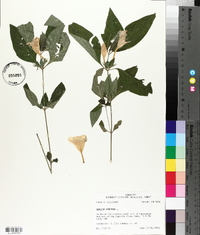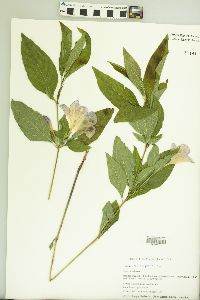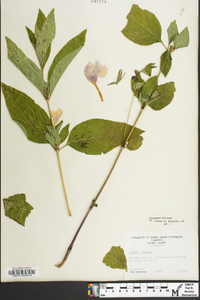Ruellia strepens
|
|
|
|
Family: Acanthaceae
Limestone Wild Petunia
[Hygrophila illinoiensis Alph. Wood ex A. Gray] |
Perennial herb 30 cm - 1 m tall Stem: possibly with a few ascending branches, and normally with two, opposite sides of the stem covered with narrow strips of short, appressed hairs. Leaves: opposite, on distinct stalks (at least 0.5 cm long), hairless or sparsely covered with short appressed hairs, non-toothed, up to 15 cm long, somewhat egg-shaped with a pointed tip, and an abruptly narrowed base. Flowers: blue-lavender, slightly bilaterally symmetric, stalked, subtended by two egg-shaped leafy bracts, and situated either at the end of leafy axillary branches, or at the middle of the stem in clusters of one to three. Sepals: five, but fused for about 5 mm, then separating into erect, 2 - 4 mm long, at least 2 mm wide, lance-shaped, glandular-hairy lobes. Petals: five, but fused into a 3.5 - 5 cm long tube or funnel with a very slender base, which then expands before separating into the rounded, spreading, about 1.5 cm long lobes. One lobe is typically slightly larger than the other four, so even though the flower almost appears radially symmetric, it is truly bilaterally symmetric. Stamens: four, but the white filaments weakly fused in pairs near the base, and the separate, yellow anthers with two-chambered, parallel, and equally sized sacs. A single sterile stamen (staminodium) often present as well. Pistil: with a single, two-chambered, superior ovary; a single, white, 3 - 4 cm long style; and a two-lobed, curled stigma. Fruit: an explosively dehiscent, narrow, somewhat flattened, two-chambered capsule, which opens along the outside of each chamber. Seeds: three to eight per fruit chamber, each with a large number of spiraled threads, which uncoil when wet, and consequently help bury the seed. Similar species: Ruellia strepens is very similar to R. humilis except that species has stems and leaves normally covered with long hairs, stalkless leaves (or nearly stalkless), and much narrower sepal lobes (only up to 1 mm wide at the base). Members of the genus Ruellia can be distinguished from members of the Solanaceae family by their opposite leaves. However, the genus Petunia often has falsely opposite leaves in the flowering branches. In this case, they differ from Ruellia by their being annuals, having five separate stamens, usually having less distinct petal lobes, and the fruit being a two-valved capsule containing numerous seeds. Flowering: June to August Habitat and ecology: Usually on shaded floodplains, but primarily localized in the Kankakee River Valley. Occurence in the Chicago region: native Notes: Occasionally forms of this species have axillary clusters of smaller flowers that never open (cleistogamous). These plants have been named Ruellia strepens forma cleistantha<i/>. Oddly they fruit very prolifically and have plump, shorter capsules with about twice as many seeds as the typical form. Etymology: Ruellia is named after Jean Ruelle, an early French herbalist (1474-1537). Strepens is the Latin word for rustling or making a loud noise, presumably referring to the explosive fruit. Author: The Field Museum Stems 3-10 dm, minutely puberulent in narrow strips on 2 opposite sides; petioles 5-20 mm; main lvs thin, ovate or lance-ovate, 5-15 cm, acute or short-acuminate, abruptly narrowed or cuneate at base, glabrous or sparsely strigose; fls from a few nodes near the middle of the stem, 1-3, subtended by 2 ovate leafy bracts, on an axillary common peduncle 5-15 mm or terminal on a leafy axillary branch; cal-lobes lanceolate, 1-2 cm נ2-4 mm; cor 3.5-5 cm, the slender tube about equaling the throat; fr glabrous; 2n=34. Moist woods; N.J. to O. and Io., s. to S.C., Ala., and Tex. May- July. Cleistogamous forms with smaller fls in cymose clusters from several axils occur occasionally. Gleason, Henry A. & Cronquist, Arthur J. 1991. Manual of vascular plants of northeastern United States and adjacent Canada. lxxv + 910 pp. ©The New York Botanical Garden. All rights reserved. Used by permission. From Flora of Indiana (1940) by Charles C. Deam This species prefers moist, alluvial soil in open woodland along streams, but is also found in moist, open woodland and rarely in moist, open places. It is sometimes found in dry soil on the slopes of high, wooded banks and ridges. There are specimens of [forma cleistantha] from Adams, Carroll, Dubois, Gibson, Harrison, Madison, Marion, Putnam, Perry, Spencer, Sullivan, and Warrick Counties. McCoy has shown that this form is only the autumnal phase of the species. [These plants have clustered flowers some of which are cleistogamous and calyx lobes that usually are more glandular.] Indiana Coefficient of Conservatism: C = 4 Wetland Indicator Status: FAC Diagnostic Traits: perennial, usually unbranched; leaves opposite, petiolate; flowers sessile in axils of mid- and upper nodes; calyx lobes linear-lanceolate, mostly 2-4 mm wide; corollas with 5, +/- equal lobes; stamens 4. |

